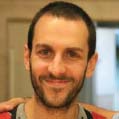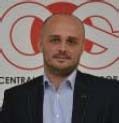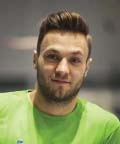|
|
|
| |
| ABSTRACT |
|
This scoping review aimed to (i) map methodological characteristics of studies investigating acute and residual fatigue and recovery after small-sided games (SSGs), (ii) identify outcomes, measures, and timings assessed across neuromuscular, psychophysiological, and biochemical/endocrine domains, and (iii) highlight evidence gaps to inform future research. Following a registered protocol (OSF: osf.io/73rzs) and PRISMA-ScR guidelines, three databases (PubMed, Scopus, Web of Science) were searched to July 2025. Eligible studies included Tier ≥2 athletes, examined SSGs as interventions, and reported pre-post neuromuscular, psychophysiological and biochemical/endocrine outcomes. Data were extracted on populations, competitive level, SSG formats, outcomes, and timings, and synthesized descriptively with evidence gap maps. From 3,842 records, 32 studies were included. Most involved men soccer players at Tier 3, with fewer on women, other sports, or adaptive contexts. SSG formats clustered around 3v3-4v4. Psychophysiological measures were most frequently reported, generally showing acute elevations in heart rate and rating of perceived exertion and short-lived reductions in heart rate variability. Neuromuscular outcomes included sprint and hamstring strength, often reduced up to 48-72 h, while countermovement jump results were inconsistent. Biochemical/endocrine measures typically showed acute rises in lactate and short-term creatine kinase elevations, with hormonal findings less consistent. Assessments were concentrated immediately post and at 24 h, with fewer extending beyond 48 h. As conclusion, current evidence suggests that SSGs are associated with acute psychophysiological strain and, in some cases, short-term neuromuscular and biochemical disturbances, but findings vary across studies. Given the methodological heterogeneity and narrow scope of populations, conclusions must be interpreted with caution. |
| Key words:
Sided-games, fatigue, recovery, team sports, conditioned games
|
Key
Points
- Most studies examined men Tier 3 soccer players in 3v3-4v4 formats, with limited data in women, other sports, or higher tiers.
- Evidence shows acute psychophysiological strain and sometimes short-term neuromuscular or biochemical disturbances, but findings are inconsistent.
- Research is methodologically diverse; standardized designs, broader populations, and longer follow-ups are needed.
|
Sided games (SSGs) are modified formats of gameplay commonly used by team sport coaches in training routines (Clemente et al., 2024). These games are valued for their specificity, as they allow coaches to target technical and tactical objectives while preserving the dynamics of real matches. However, in some cases, they may underestimate certain aspects of physical demands (Davids et al., 2013). At the same time, they offer opportunities to exaggerate certain tactical behaviors in line with specific training goals (Torrents et al., 2016). Typically played on smaller fields and with fewer players, SSGs increase the frequency of individual technical actions (Clemente and Sarmento, 2020) and create a more intense physiological environment (Rampinini et al., 2007). While the intensity of these games can vary depending on task constraints set by the coach, research has shown that both physiological and physical demands can be high (Bujalance-Moreno et al., 2019). For example, heart rate and blood lactate levels during SSGs are often reported to be higher than in formal matches (Asci, 2016; Köklü and Alemdaroğlu, 2016). However, physical demands tend to depend on the specific variables being measured (Clemente, 2020). SSGs usually impose greater demands on acceleration and deceleration due to limited space (Clemente et al., 2019), while demands for high-speed running are typically lower (Asian-Clemente et al., 2021). Research on SSGs has grown steadily in recent years (Clemente, 2023). While traditionally used to achieve technical or tactical objectives (Ferreira-Ruiz et al., 2022), a substantial body of research has also emerged focusing on the physiological and physical demands of these games, particularly in relation to various task constraints. This strong and sustained interest is evident in the increasing number of review articles on the topic (Hill-Haas et al., 2011; Halouani et al., 2014; Bujalance-Moreno et al., 2019; Clemente et al., 2022; Praca et al., 2022). Furthermore, experimental studies exploring how SSGs may drive physical adaptations have become a prominent research trend, contributing to the development of new systematic reviews and meta-analysis (Hammami et al., 2018a; Moran et al., 2019; Clemente et al., 2023). The research traction in SSGs and impacts on physiological and physical demands is likely due to the recognition that these games can be used strategically to deliver specific physical stimuli (Owen et al., 2012; Dellal et al., 2012). As such, research has begun to investigate the acute and residual fatigue associated with SSGs—specifically how these games affect recovery processes and how long their impact may last (Sparkes et al., 2018; Papanikolaou et al., 2021). Studies have assessed acute neuromuscular impairments post-SSG (Johnston et al., 2014), tracked biochemical markers related to inflammation (Bekris et al., 2022), and monitored muscle function to determine how long impairments persist (Sparkes et al., 2020b). Although in real-world training contexts it is difficult to isolate the effects of SSGs -since they are typically integrated into broader training routines- there is growing interest in understanding their individual contributions to player fatigue and recovery. This is especially relevant compared to the more established body of research on post-match fatigue (Silva et al., 2018). The growing emphasis on understanding how SSGs influence physical recovery may have practical implications, particularly when it comes to planning training schedules. Identifying which formats of SSGs are more suitable closer to match days -and which should be used earlier in the week- can support planning. Given the emerging interest in acute (i.e., immediate post-exercise) and residual (i.e., delayed) physical fatigue and recovery time following SSG implementation, a scoping review with an evidence gap map is timely. As the evidence base is still emerging and methodologically diverse, a scoping review is well-suited to define the boundaries of the current literature, highlight methodological limitations, and guide future research through clearer, more refined study designs (Peters et al., 2015; Munn et al., 2018). Therefore, the aims of this review were to: (i) summarize the main methodological characteristics of studies investigating acute and residual physical fatigue and recovery time following SSGs in team sport athletes, regardless of sex or competition level; (ii) identify and catalog the outcomes assessed, the measurement tests and time points used, and the characteristics of the implemented SSGs; (iii) briefly summarize the main findings and trends from the existing body of research; and (iv) map current research gaps and outline directions for future investigations. Our protocol was registered in advance in the Open Science Framework (OSF) under the identifier osf.io/73rzs (date: 02 july, 2025). The review aligns with the Preferred Reporting Items for Systematic Reviews and Meta-Analyses (PRISMA-ScR) recommendations (Tricco et al., 2018), albeit with some updates based on PRISMA 2020 (Page et al., 2021). Eligibility criteriaPeer-reviewed original studies (including ahead of print) were considered for inclusion. No restrictions were placed on language or year of publication, to ensure a comprehensive and unbiased selection process (Rechenchosky et al., 2021). Further criteria for study inclusion were structured around the PICOS framework:
Population (P): Team ball sport players who met at least Tier 2 classification according to the Participants Classification Framework (PCF) (McKay et al., 2022). Athletes of all ages, competitive levels, and physical conditions -including para-athletes- were eligible. Studies focusing on injured athletes were excluded from consideration.
Intervention (I): SSGs (including small, medium, and large), regardless of the number of sets, repetitions, or training sessions involved. Research that combined SSGs with other training methods was also accepted, as long as SSGs were the differentiating factor in the research and training context.
Comparators (C): Not mandatory.
Outcomes (O): Assessed before and after the implementation of SSGs. Acceptable outcome measures included, but were not limited to, neuromuscular performance (e.g., strength, power output, sprint performance, jump height), physiological responses (e.g., heart rate variability, blood pressure, lactate concentration, biochemical markers and endocrine responses). Socio-psychological variables (e.g., motivation, mood), technical or tactical performance, or decision-making processes were not considered for this review.
Study Design (S): Experimental designs, controlled or uncontrolled, including single-cohort studies or case reports are eligible.
Information sourcesThree major databases -PubMed, Scopus, and Web of Science (Core Collection)- were used to capture publications available up to July 03, 2025. To strengthen the methodological accuracy and minimize the possibility of missing pertinent literature, additional manual searches were conducted by reviewing the reference lists of all included articles. Citation chaining (snowballing) was also applied using the Web of Science platform to further enrich the search process. To ensure completeness and methodological soundness, feedback was sought from two internationally recognized experts in team sports, identified through the Expertscape platform (https://expertscape.com/ex/team+sports). Furthermore, each included study was checked for associated errata or retractions to ensure data integrity.
Search strategyTo maximize the retrieval of relevant studies, the search strategy employed the Boolean operators “OR” and “AND.” The search was conducted without any restrictions related to publication date or language, and no additional filters were used, thereby enabling a wide-ranging and inclusive search. This method was intended to gather a diverse selection of applicable studies without limiting the scope. The details of the search procedure are presented below:
[Ti/Ab]: ("baseball" OR basketball OR "cricket" OR frisbee OR football* OR futsal OR hockey OR handball OR korfball OR lacrosse OR netball OR polo OR player* OR rugby OR "soccer" OR softball OR "team-based sport*" OR "team sport*" OR volleyball)
AND
[Ti/Ab]: ("conditioned game*" OR "constrained game" OR "game-based drill*" OR "game-based training" OR "game-based training" OR "modified game*" OR "reduced-format game*" OR "sided game*" OR "small-sided game*" OR "situational game*")
Selection processThe initial screening of studies, based on titles and abstracts, was performed independently by two authors (FMC and RT). Abstracts that met the predefined inclusion criteria led to the retrieval of full-text articles when needed. Subsequently, the same authors independently conducted a detailed evaluation of the full texts for all studies passing the preliminary screening. In cases of disagreement, discussions were held to reach consensus; if unresolved, a third reviewer (MB) was consulted to adjudicate. The process of managing records and removing duplicate entries was facilitated through EndNote™ software (version 20.5, Clarivate Analytics, Philadelphia, PA), combining both automated and manual approaches.
Data collection processTo ensure a systematic and organized data extraction process, a dedicated Microsoft Excel spreadsheet (Microsoft®, USA) was created and made available in the OSF registration area to capture all relevant information. The initial data collection was performed by one author (FMC) and subsequently reviewed for accuracy and completeness by two additional authors (RT and RMS). When essential data were missing from full-text articles, FMC reached out to the corresponding authors via email and ResearchGate to request the required information. If no reply was received within four weeks, the study’s data were excluded from the review.
Data itemsData extracted from each study included the following: (i) the number of participants; (ii) competitive level according to the Participants Classification Framework [42]; (iv) participant sex; (v) age; and (vi) key methodological details such as study design, randomization procedures, number of assessments, and timing of data collection. Regarding SSGs, information gathered encompassed: (i) the format of play; (ii) the training regimen (sets, repetitions, minutes of work, minutes of rest); (iii) characteristics of the field, and other rules; and (v) details of the number of sessions analyzed. Additionally, any other relevant information, if available, will be collected. This includes details of any training conducted concurrently with the SSGs or information regarding any remaining sessions (which is common in training scenarios), as these could potentially interfere with the regular recovery process. Outcomes were organized into two primary categories, but were not limited to: (i) neuromuscular performance (e.g., strength, power output, sprint performance, jump height); (ii) physiological responses (e.g., heart rate variability, blood pressure, lactate concentration, biochemical markers, and endocrine responses.
Data synthesis methods and evidence gap mapThe analysis involved a descriptive synthesis alongside numerical summaries, such as frequencies and proportions, for the collected data points. To clearly depict the current state of knowledge and pinpoint where research is lacking, an evidence gap map was produced. This graphic tool was designed to visually convey both the breadth of existing findings and highlight significant voids in the literature.
Selection of sources of evidenceThe electronic searches across PubMed, Scopus, and Web of Science yielded a total of 3,842 records, with 764 retrieved from PubMed, 1,551 from Scopus, and 1,527 from Web of Science. After automatic and manual deduplication, 2,025 unique records remained and were screened based on titles and abstracts. Of these, 1,992 records were excluded as they did not meet the eligibility criteria outlined in the protocol. Following this stage, 33 full-text reports were sought for retrieval and all were successfully obtained. Full-text screening resulted in the exclusion of six reports. The reasons for exclusion were as follows: three studies involved populations that did not meet the minimum Tier 2 classification according to the Participants Classification Framework (PCF) (Hammami et al., 2017; 2018b; Panduro et al., 2022), one study (Emirzeoğlu and Ülger, 2021) did not implement SSGs but rather another type of game-based intervention, and two studies did not provide outcomes assessed pre- and post-SSGs (Delextrat et al., 2018; Reinhardt et al., 2020). In addition to database searching, five additional records (Sjokvist et al., 2011; Trecroci et al., 2020; 2021; Mitrotasios et al., 2021; Karadağ et al., 2024) were identified through citation searching. All five reports were retrieved and assessed for eligibility, and none were excluded at this stage. In total, thirty-two studies met all inclusion criteria and were included in the review (Figure 1).
Characteristics of sources of evidenceThe majority of the studies investigated in this review focused on men, with 30 of the 33 samples consisting exclusively of men (Table 1). Only a very small proportion involved women (Bonato et al., 2020; Alashti et al., 2021; Bekris et al., 2022). With respect to age, most samples (23 studies) involved athletes 18 years old or older, while only 9 studies recruited participants under 18 years old. In terms of competitive tier, most studies recruited athletes from Tier 3 (17 studies), which represents semi-professional or well-trained players, followed by Tier 2 (10 studies) and fewer contributions from Tier 4 and Tier 5 (Dellal et al., 2015; Dello Iacono et al., 2017; Sparkes et al., 2018; Ravier and Marcel-Millet, 2020; Mitrotasios et al., 2021). Across the included studies, the most frequently employed SSG formats were 4v4 (20 studies) and 3v3 (10 studies). Smaller formats such as 2v2 and 1v1 appeared less often (three studies each). Larger-sided formats, including 6v6, 7v7, and 8v8, were rarely used, together representing five studies. Regarding the domains analyzed, the most common focus was on physiological outcomes, reported in 30 studies, with measures such as heart rate, percentage of HRmax, and rating of perceived exertion appearing consistently. Neuromuscular markers (e.g., sprint performance, jump ability) were considered in 20 studies, revealing substantial emphasis. Finally, biochemical/endocrine markers such as cortisol, lactate, and hormonal responses were examined in 17 studies.
Results of individual sources of evidenceTable 2 summarizes the neuromuscular outcomes reported across the included studies. The most frequent measures were countermovement jump height and peak power, short sprint times (5-30 m), repeated-sprint ability, hamstring and quadriceps strength (isometric and isokinetic), and change-of-direction or agility tests. Table 3 presents the psychophysiological responses to SSGs, including internal load indicators such as heart rate, heart-rate recovery, and heart-rate variability, as well as perceptual measures like RPE (rating of perceived exertion), DOMS (delayed onset muscle soreness), TQR (total quality recovery), and mood, alongside external load variables (total distance, high-intensity running, sprinting, accelerations). Autonomic measures typically showed acute parasympathetic suppression, and perceptual fatigue often peaked immediately or at 24 h post. Table 4 compiles the biochemical and endocrine measures assessed across studies. The most common outcomes were blood lactate, creatine kinase, lactate dehydrogenase, testosterone, and cortisol, with a smaller number of studies examining inflammatory cytokines, immune cell counts, or other enzymes.
Evidence gap mapFigure 2 presents an evidence gap map of the studies included, organized by format of play, competitive level, and outcome domain (neuromuscular, psychophysiological, biochemical/endocrine). The descriptive overview shows a strong concentration of evidence in 3v3-4v4 formats, particularly at Tier 3 level, where psychophysiological measures are most frequently reported (n = 16), followed by neuromuscular (n = 13) and biochemical/endocrine (n = 8). By contrast, evidence is sparse for 1v1-2v2 and 5v5-6v6, with only a handful of studies at Tier 2 and Tier 3 and almost none at higher tiers. 7v7-8v8 is also underrepresented, with only one or two studies per domain at Tier 2-3 and none at Tiers 4-5. Figure 3 illustrates the distribution of studies according to the timing of assessment and the domain of outcomes investigated (neuromuscular, psychophysiological, biochemical/endocrine). The map highlights that the majority of assessments were performed immediately post-SSG, with psychophysiological measures most common (n = 28), followed by neuromuscular (n = 17) and biochemical/endocrine (n = 15). Considerably fewer studies examined responses within the first hour post-exercise (n = 4 in psychophysiological and biochemical/endocrine each), or in the 1-12 h window (n = 4 neuromuscular, n = 4 psychophysiological, n = 2 biochemical/endocrine). Monitoring at 12-24 h was relatively frequent, especially for psychophysiological (n = 11) and neuromuscular (n = 9) markers, with biochemical/endocrine outcomes also represented (n = 7). Beyond 24 h, the evidence base is more limited, with only 4-6 studies per domain between 24-48 h and 48-72 h, indicating that longer-term recovery trajectories remain underexplored.
This scoping review mapped the acute and short-term responses to SSGs across neuromuscular, psychophysiological, and biochemical/endocrine domains. The studies included span different sports, ages, and competitive levels, and collected a variety of measures and assessment timings. While this methodological diversity enriches the evidence base, it also explains the variability observed in reported outcomes. Methodological aspectsMost studies were conducted in men soccer players. Women were less represented, with only a small number of research targeting female players (Sjokvist et al., 2011; Mascarin et al., 2018), and nearly all were soccer-based. One exception was the use of basketball SSGs (Sansone et al., 2019), which allowed exploration of tactical offense/defense regimes and endocrine responses, and another was handball (Dello Iacono et al., 2017; Ravier and Marcel-Millet, 2020), where contact elements and autonomic recovery were highlighted. In addition, two studies investigated wheelchair basketball (Iturricastillo, Yanci and Granados, 2018; Ascondo et al., 2024), enabling comparison between athletes with spinal cord injury (SCI) and non-SCI peers. In terms of age groups, participants ranged from youth players (Madison et al., 2019; Skala and Zemková, 2023) to elite senior professionals (Dellal et al., 2015; Sparkes et al., 2018). Youth cohorts were often examined for external load and recovery sensitivity (Calderón Pellegrino et al., 2020), while professional cohorts were usually monitored for endocrine, neuromuscular, and biochemical markers under congested or match-like schedules (Sansone et al., 2019; Bekris et al., 2022). Regarding competitive levels, most soccer studies sampled academy or semi-professional athletes (Bekris et al., 2022; Kryściak et al., 2023; Karadağ et al., 2024), with fewer in professional environments (Dellal et al., 2015; Sparkes et al., 2018; Madison et al., 2019). In the neuromuscular domain, CMJ and sprint times (0-10, 10-20, 0-20, 30 m) were most common, alongside hamstring/quadriceps MVIC or isokinetics, and change-of-direction agility (Johnston et al., 2014; Baseri et al., 2022; Bekris et al., 2022; Martínez-Serrano et al., 2023). In the psychophysiological domain, nearly all studies collected HR and RPE, with several applying HRV and HRR for autonomic recovery (Dellal et al., 2015; Mascarin et al., 2018; Ravier and Marcel-Millet, 2020). GPS-derived external load was frequently integrated (Madison et al., 2019; Papanikolaou et al., 2021). In the biochemical and endocrine domain, CK and lactate were the most widely adopted, often accompanied by testosterone and cortisol (Sparkes et al., 2018; 2020b; a; Sansone et al., 2019), while fewer studies examined inflammatory cytokines or immune markers (Dello Iacono et al., 2017; Trecroci et al., 2021). The majority of studies evaluated immediate responses (0-2 h post), typically for neuromuscular, perceptual, and metabolic markers (e.g., lactate, CMJ, HRV). Short-term (24 h) assessments were frequent, especially for neuromuscular and biochemical endpoints (Sparkes et al., 2018; Modena and Schena, 2024), while extended follow-ups to 48-72 h were less common but critical for muscle damage markers and strength recovery (Papanikolaou et al., 2021; Trecroci et al., 2021). Only a minority of studies incorporated multiple follow-ups beyond 24 h, which limits the analysis of recovery timelines. Furthermore, very few examined intra-session kinetics (McLean et al., 2016; Kryściak et al., 2023) or next-day morning responses such as cortisol awakening response (Bonato et al., 2020).
Neuromuscular responsesAcross studies, neuromuscular status was tracked using countermovement/squat jumps, short sprint splits (0-10, 10-20, 0-20 m), hamstring and knee extensor strength (isometric and isokinetic), change-of-direction and agility tests, and (in wheelchair sport) push sprints and sled-towing. Immediately post-SSG, decrements were frequent but not universal: CMJ height and peak power fell acutely in professional players after 4v4+GK (with a characteristic dip at 0-2 h, transient recovery, and a second dip by 24 h) (Sparkes et al., 2018), and the same format produced small but consistent post-session CMJ/sprint decrements that were more persistent during congested periods (Sparkes et al., 2020a) or when resistance training preceded SSG (Sparkes et al., 2020b). Youth players showed clear post-SSG impairments in CMJ (-6.6%) and agility, alongside more errors in a go/no-go task (Skala and Zemková, 2023). In wheelchair basketball, small post-SSG decrements emerged in 5-20 m push sprints and sled-towing (Iturricastillo et al., 2018), and during bout-by-bout monitoring, athletes with spinal cord injury (SCI) displayed mid-session sprint losses that were absent in non-SCI peers (Ascondo et al., 2024). However, several studies did not detect immediate neuromuscular impairment despite high cardiovascular strain: repeated 1v1 and 3v3 bouts left SJ/CMJ unchanged (Clemente et al., 2017), CMJ was stable across multiple large-sided formats (Hidalgo de Mora et al., 2024), and a demanding 3v3 protocol in trained men produced no post- or 72 h decrements in squat jump or 20 m sprint (Bekris et al., 2022). By <24 h, sensitivity diverged by test and format: hamstring isometric force fell more after a larger-area 4v4 than a tight 3v3 and correlated with acceleration counts (Madison et al., 2019); contact elements amplified neuromuscular loss - upper-body press-up power and lower-body CMJ were substantially depressed after contact vs non-contact small-sided rugby (Johnston et al., 2014) and after contact handball SSGs (Dello Iacono et al., 2017). From 24-72 h, larger or more open formats tended to prolong impairment: 8v8 produced longer-lasting decrements than 4v4 in CMJ, sprint, and isokinetic strength (Papanikolaou et al., 2021), and 6v6 (200 m2·player-1) induced residual 24 h sprint and CMJ deficits that were absent or smaller after 3v3 (Modena and Schena, 2024). Acceleration ability was the most consistently sensitive metric across formats (Hidalgo de Mora et al., 2024), whereas CMJ was notably variable (depressed in (Sparkes et al., 2018); persistent after 6v6 in (Modena and Schena, 2024); stable in (Hidalgo de Mora et al., 2024) and (Clemente et al., 2017)). Recovery strategies also mattered: after matches, an MD+2 active-recovery (AR) session restored hamstring force more effectively by 72 h than a soccer-specific training (SST) session (Trecroci et al., 2020), mirroring biochemical and soreness advantages seen in the companion study (Trecroci et al., 2021). These data suggest sprint-based measures -especially acceleration (0-10 m)- and knee flexor strength are the clearest barometers of residual fatigue, while CMJ can under-detect fatigue depending on SSG format, bout structure, and scheduling (Clemente et al., 2017; Sparkes et al., 2018; Bekris et al., 2022; Modena and Schena, 2024; Hidalgo de Mora et al., 2024).
Psychophysiological responsesSSGs consistently elicited match-like cardiovascular strain during play, with mean heart rates typically ~85-90% HRmax and frequent time >90% HRmax, particularly in smaller formats (Mitrotasios et al., 2021; Skala and Zemková, 2023). At the same time, perceived exertion did not always track HR: in a direct 4v4 vs 8v8 comparison, HR and lactate were higher in 4v4, yet RPE was higher in 8v8, signaling that space, density, and tactical demands shape perception beyond pure physiological load (Papanikolaou et al., 2021). Format manipulations showed expected gradients -2v2 and 4v4 drove higher post-exercise HR and lactate than 8v8, with partial recovery within 30 min but incomplete return to baseline (Karadağ et al., 2024)- while bout architecture and recovery altered internal kinetics without changing external output: shortening inter-bout recovery (30 s vs 120 s) elevated recovery HR and muscle deoxygenation (NIRS), yet total distance and speed-zone distribution were preserved via pacing (McLean et al., 2016). Autonomic measures showed acute parasympathetic withdrawal: lnRMSSD, lnSDNN, and related HRV indices plummeted immediately post-SSG (Mascarin et al., 2018; Ravier and Marcel-Millet, 2020) and typically normalized or rebounded within 24 h in women after 4v4 (Mascarin et al., 2018). Heart-rate recovery (HRR) was format-sensitive across 2v2-4v4 and goalkeeping conditions (Dellal et al., 2015), and handball SSGs induced greater post-exercise autonomic depression than repeated-sprint or circuit conditioning of similar duration (Ravier and Marcel-Millet, 2020). Perceptual and mood responses followed a rapid time course: mood disturbance spiked immediately post and resolved by 24 h in a standard session (Sparkes et al., 2018), although it lingered under congestion (Sparkes et al., 2020a) or when SSG preceded resistance training within the same day (Sparkes et al., 2020b). DOMS increased after both small and large formats and was still elevated at 24 h (Modena and Schena, 2024), while in women a CMJ decrement and higher session RPE were evident at 24 h but recovered by 48-72 h (Sjokvist et al., 2011). Task constraints in basketball shaped load and HR -offense exceeded defense and short-intermittent exceeded long-intermittent in PlayerLoad- with modest HR differences (Sansone et al., 2019). These findings indicate that during SSGs the cardiovascular load is consistently high but the recovery of autonomic and perceptual systems is generally rapid (<24 h), while perceptions can diverge from HR depending on format and task, and global RPE may fail to detect muscle-specific fatigue (Papanikolaou et al., 2021; Martínez-Serrano et al., 2023).
Biochemical and endocrine responsesAcid–base variables were more discriminating than HR or lactate for bout-length effects: 30-s bouts induced more pronounced bicarbonate depletion and negative base-excess than 45-s bouts despite similar HR and lactate, flagging these as sensitive fatigue markers for short-burst SSGs (Kryściak et al., 2023). Markers of muscle damage frequently peaked later: CK and LDH increased immediately after intensive 4v4+GK (Mitrotasios et al., 2021) and remained elevated for ≥24 h after 4v4+GK in pros, with additive rises across congested exposures (Sparkes et al., 2018; 2020a). Between formats, higher-density 4v4 elicited greater CK responses than 8v8 at 48-72 h, consistent with higher mechanical stress per area (Papanikolaou et al., 2021). After matches, the choice of MD+2 session influenced biochemical recovery: compared with a 60-min soccer-specific session including SSGs, a 30-min active-recovery session produced a larger CK decline and greater resolution of soreness by +72 h, while inflammatory, immune, and endocrine markers followed similar time courses in both conditions (Trecroci et al., 2021). Inflammatory cytokines and immune counts exhibited the expected short-lived spikes -IL-6 rose acutely after contact-rich SSGs (Dello Iacono et al., 2017) and after matches (Trecroci et al., 2021)- and generally normalized by 72 h (Trecroci et al., 2021). Endocrine responses varied by sport and task: in soccer, T often showed a small acute rise followed by suppression at 2-24 h, with cortisol falling or returning to baseline by 24 h (Sparkes et al., 2018, 2020a; 2020b; 2022), whereas in basketball cortisol rose across offense/defense and regime conditions and testosterone moved in opposite directions depending on tactical task (Sansone et al., 2019). Short, intense 1v1 soccer drills transiently increased total and free testosterone and cortisol with depressed TT/C ratios at 15-30 min post (Chmura et al., 2019), and an evening 4v4 session elicited a robust salivary cortisol surge with a clear next-morning cortisol awakening response, albeit smaller than matched-load HIIT (Bonato et al., 2020). Several studies reported no change in selected biochemical domains: lipids were stable across 4v4+GK (Mitrotasios et al., 2021), CK did not rise in women after 4v4 across 10-72 h (Mascarin et al., 2018), and growth-axis hormones increased acutely with SSGs (GH, IGF-1) without indicating prolonged disruption (Alashti et al., 2021). In sum, lactate and acid–base indices map the immediate (<30-60 min) metabolic stress, hormonal perturbations are typically short-to-mid-lived (resolving by ~24-48 h unless exposure is congested), and CK/LDH reflect residual damage that can persist to 48-72 h and is sensitive to format, density, and post-match training choice (Sparkes et al., 2018; Papanikolaou et al., 2021; (Sparkes et al., 2018; Papanikolaou et al., 2021; Trecroci et al., 2021).
Limitations and future directionsSome methodological limitations should be acknowledged. First, the evidence base is dominated by male soccer players, with relatively few investigations in female athletes, and other team sports such as basketball or handball. This sex and sport imbalance restricts the generalizability of findings and limits understanding of whether recovery kinetics differ by biological sex, sport-specific demands, or disability status. Second, there is substantial heterogeneity in SSG formats and bout structures, ranging from 1v1 to 8v8, with and without goalkeepers, and with varying pitch dimensions and work-to-rest ratios. Although this variety reflects ecological practice, it complicates comparisons across studies and makes it difficult to isolate the impact of single design variables. Another common limitation lies in the reporting and control of overall training load. In many studies, SSGs were not isolated from the remaining training contents of the session or microcycle, and the additional drills, conditioning, or tactical work were either insufficiently described or not reported at all. This lack of contextualization makes it difficult to attribute observed responses solely to SSG exposure and raises the possibility that neuromuscular, biochemical, or perceptual outcomes were influenced by concurrent training. A further limitation concerns the choice of measures. Most investigations employed accessible field-based markers such as CMJ, sprint times, HR, and RPE, while fewer incorporated biochemical, endocrine, or advanced autonomic measures. This reliance on a narrow set of indicators may under-detect certain types of fatigue, as shown by discrepancies between global perceptual scales and localized muscle fatigue. Assessment timings also limit interpretation: the majority of studies assessed immediate or 24-h responses, with relatively few extending to 48-72 h, and very few examining intra-session kinetics or next-morning endocrine dynamics. Finally, many studies had small sample sizes, and effect estimates were often reported without standardized thresholds or with variable statistical approaches, reducing comparability. Future research should address these limitations by broadening the scope of populations studied, including female, youth, recreational, and adaptive athletes, and extending investigations to sports beyond soccer. Greater methodological consistency in SSG formats, pitch dimensions, and bout structures would aid comparability, while adjusted designs could isolate the effects of specific game constraints. Expanding the range of outcome measures is equally important: alongside traditional neuromuscular and perceptual tests, researchers should integrate biochemical, endocrine, and cognitive assessments to capture multidimensional fatigue. Longitudinal designs with extended follow-up windows (48-96 h) are needed to map full recovery timelines, and studies should include larger sample sizes from multiple centers.
This scoping review mapped how SSGs influence acute and short-term responses across neuromuscular, psychophysiological, and biochemical/endocrine domains. The literature is dominated by studies in men soccer players, with limited research in women, youth-to-senior comparisons, or other team sports, and most investigations relied on field-based measures (CMJ, sprint times, HR, RPE) with fewer including biochemical, endocrine, or cognitive markers. Across domains, the evidence suggest that SSGs may elicit high cardiovascular and perceptual loads and acute autonomic suppression, often accompanied by transient decrements in neuromuscular performance and increases in biochemical markers of muscle damage and hormonal disturbance. Recovery timelines vary: autonomic and perceptual fatigue generally resolve within 24 h, whereas neuromuscular and biochemical markers frequently persist for 48-72 h, particularly following larger formats, contact elements, or congested schedules. At the same time, findings are heterogeneous, with some studies reporting no neuromuscular impairment or hormonal changes, reflecting differences in format, scheduling, and measurement sensitivity. A further limitation is that many studies did not isolate SSGs from the remaining training load or failed to report concurrent training activities, complicating the attribution of observed responses specifically to SSG exposure. Other common methodological limitations include the narrow populations studied, variability in SSG design, short follow-up windows, and reliance on small sample sizes. Future research should expand to more diverse populations and sports, employ standardized SSG protocols, integrate multidimensional outcome measures (including cognitive and biochemical markers), systematically report overall training load, and extend monitoring to 48-96 h to map recovery trajectories.
| ACKNOWLEDGEMENTS |
The authors have no conflicting interests to declare. While the datasets generated and analyzed in this study are not publicly available, they can be obtained from the corresponding author upon reasonable request. All experimental procedures were conducted in compliance with the relevant legal and ethical standards of the country where the study was carried out. |
|
| AUTHOR BIOGRAPHY |
|
 |
Filipe Manuel Clemente |
| Employment: Gdansk University of Physical Education and Sport, Gdańsk, Poland |
| Degree: PhD |
| Research interests: athletic performance; sports training; performance analysis. |
| E-mail: filipe.clemente5@gmail.com |
| |
 |
José Afonso |
| Employment: Professor at Centre for Research, Education, Innovation, and Intervention in Sport (CIFI2D), Faculty of Sport of the University of Porto, Porto, Portugal. |
| Degree: PhD |
| Research interests: Training Theory and Methodology, Performance Analysis, Exercise Prescription |
| E-mail: jneves@fade.up.pt |
| |
 |
Robert Trybulski |
| Employment: Medical Department Wojciech Korfanty, Upper Silesian Academy, Katowice, Poland |
| Degree: PhD |
| Research interests: Sports physiotherapy, biomechanics. |
| E-mail: rtrybulski.provita@gmail.com |
| |
 |
Marco Beato |
| Employment: School of Allied Health Sciences, University of Suffolk, Ipswich, United Kingdom |
| Degree: PhD |
| Research interests: Sports performance, strength and conditioning, GPS technology |
| E-mail: M.Beato@uos.ac.uk |
| |
 |
Javier Sanchez Sanchez |
| Employment: Universidad Pontificia de Salamanca, Spain. |
| Degree: PhD |
| Research interests: Strength and conditioning, physical performance in elite sports |
| E-mail: jsanchezsa@upsa.es |
| |
 |
Dariusz Mroczek |
| Employment: Department of Sport Didactics, Wrocław University of Health and Sport Sciences, Wrocław, Poland |
| Degree: PhD |
| Research interests: Physiology, fatigue, recovery. |
| E-mail: dariusz.mroczek@awf.wroc.pl |
| |
 |
Tomasz Grzywacz |
| Employment: Gdansk University of Physical Education and Sport, Gdańsk, Poland |
| Degree: PhD |
| Research interests: Sports physiotherapy, biomechanics. |
| E-mail: tomasz.grzywacz@awf.gda.pl |
| |
 |
Piotr Sawicki |
| Employment: Gdansk University of Physical Education and Sport, Gdańsk, Poland |
| Degree: PhD |
| Research interests: Sports physiotherapy, biomechanics. |
| E-mail: piotr.sawicki@awf.gda.pl |
| |
 |
Francisco Tomás González-Fernández |
| Employment: Department of Physical Education and Sports, Faculty of Sport Sciences, University of Granada, Spain |
| Degree: PhD |
| Research interests: Sports performance, biomechanics, team sports |
| E-mail: ftgonzalez@ugr.es |
| |
|
| |
| REFERENCES |
 Alashti M., Shirvani H., Rad R. S., Ordeghan A. N. (2021) Effects of different small-sided games on blood lactate and GH/IGF-1 axis responses in young soccer players. German Journal of Exercise and Sport Research 51, 86-93. Crossref |
 Asci A. (2016) Heart rate responses during small sided games and official match-play in soccer. Sports , 4. Crossref |
 Ascondo J., Iturricastillo A., Granados C., Fernandez-Lasa U., Romaratezabala E., Yanci J. (2024) Neuromuscular fatigue after small-sided games in wheelchair basketball players with and without spinal cord injury. Research Quarterly for Exercise and Sport 95, 519-528. Crossref |
 Asian-Clemente J., Rabano-Muñoz A., Muñoz B., Franco J., Suarez-Arrones L. (2021) Can small-side games provide adequate high-speed training in professional soccer?. International Journal of Sports Medicine 42, 523-528. Crossref |
 Baseri M. K., Reisi J., Bagheri R., Clemente F. M. (2022) Effects of active and cold-water immersion recovery strategies on perceived well-being and physical readiness: A crossover study conducted after small-sided soccer games. Human Movement 23, 120-129. Crossref |
 Bekris E., Bourdas D. I., Mylonis E., Ispirlidis I., Zacharakis E. D., Katis A. (2022) Effect of 3 vs. 3 soccer small-sided game on various performance, inflammatory, muscle damage and hormonal indicators in semi-professional players. Sports , 10. Crossref |
 Bonato M., La Torre A., Saresella M., Marventano I., Merati G., Banfi G., Vitale J. A. (2020) Effect of high-intensity interval training versus small-sided games training on sleep and salivary cortisol level. International Journal of Sports Physiology and Performance 15, 1237-1244. Crossref |
 Bujalance-Moreno P., Latorre-Román P. Á., García-Pinillos F. (2019) A systematic review on small-sided games in football players: Acute and chronic adaptations. Journal of Sports Sciences 37, 921-949. Crossref |
 Calderón Pellegrino G., Paredes-Hernández V., Sánchez-Sánchez J., García-Unanue J., Gallardo L. (2020) Effect of the fatigue on the physical performance in different small-sided games in elite football players. Journal of Strength and Conditioning Research 34, 2338-2346. Crossref |
 Chmura P., Podgorski T., Konefal M., Rokita A., Chmura J., Andrzejewski M. (2019) Endocrine responses to various 1 × 1 small-sided games in youth soccer players. International Journal of Environmental Research and Public Health 16. Crossref |
 Clemente F. M. (2020) The threats of small-sided soccer games: A discussion about their differences with the match external load demands and their variability levels. Strength & Conditioning Journal 42, 100-105. Crossref |
 Clemente F. M. (2023) Bibliometric analysis of scientific production in small-sided games. Human Movement 24, 1-17. Crossref |
 Clemente F. M., Afonso J., Silva R. M., Aquino R., Vieira L. P., Santos F., Teoldo I., Oliveira R., Praça G., Sarmento H. (2024) Contemporary practices of Portuguese and Brazilian soccer coaches in designing and applying small-sided games. Biology of Sport 41, 185-199. Crossref |
 Clemente F. M., Aquino R., Praça G. M., Rico-González M., Oliveira R., Silva A. F., Sarmento H., Afonso J. (2022) Variability of internal and external loads and technical/tactical outcomes during small-sided soccer games: A systematic review. Biology of Sport 39, 647-672. Crossref |
 Clemente F. M., Moran J., Ramirez-Campillo R., Beato M., Afonso J. (2023) Endurance performance adaptations between SSG and HIIT in soccer players: A meta-analysis. International Journal of Sports Medicine ahead-of-print. Crossref |
 Clemente F. M., Nikolaidis P. T., Van Der Linden C. M. I. N., Silva B. (2017) Effects of small-sided soccer games on internal and external load and lower limb power: A pilot study in collegiate players. Human Movement 18, 50-57. Crossref |
 Clemente F. M., Sarmento H. (2020) The effects of small-sided soccer games on technical actions and skills: A systematic review. Human Movement 21, 100-119. Crossref |
 Clemente F. M., Sarmento H., Rabbani A., Van Der Linden C. M. I. N., Kargarfard M., Costa I. T. (2019) Variations of external load variables between medium- and large-sided soccer games in professional players. Research in Sports Medicine 27, 50-59. Crossref |
 Davids K., Araújo D., Correia V., Vilar L. (2013) How small-sided and conditioned games enhance acquisition of movement and decision-making skills. Exercise and Sport Sciences Reviews 41, 154-161. Crossref |
 Delextrat A., Gruet M., Bieuzen F. (2018) Effects of small-sided games and high-intensity interval training on aerobic and repeated sprint performance and peripheral muscle oxygenation changes in elite junior basketball players. Journal of Strength and Conditioning Research 32, 1882-1898. Crossref |
 Dellal A., Casamichana D., Castellano J., Haddad M., Moalla W., Chamari K. (2015) Cardiac parasympathetic reactivation in elite soccer players during different types of traditional high-intensity training exercise modes and specific tests: Interests and limits. Asian Journal of Sports Medicine 6, e25723. Crossref |
 Dellal A., Varliette C., Owen A., Chirico E. N., Pialoux V. (2012) Small-sided games versus interval training in amateur soccer players. Journal of Strength and Conditioning Research 26, 2712-2720. Crossref |
 Dello Iacono A., Eliakim A., Padulo J., Laver L., Ben-Zaken S., Meckel Y. (2017) Neuromuscular and inflammatory responses to handball small-sided games: The effects of physical contact. Scandinavian Journal of Medicine & Science in Sports 27, 1122-1129. Crossref |
 Emirzeoğlu M., Ülger Ö. (2021) The acute effects of cognitive-based neuromuscular training and game-based training on the dynamic balance and speed performance of healthy young soccer players. Games for Health Journal 10, 121-129. Crossref |
 Ferreira-Ruiz Á., García-Banderas F., Martín-Tamayo I. (2022) Systematic review: Technical-tactical behaviour in small-sided games in men’s football. Apunts. Educación Física y Deportes 148, 42-61. Crossref |
 Halouani J., Chtourou H., Gabbett T., Chaouachi A., Chamari K. (2014) Small-sided games in team sports training: A brief review. Journal of Strength and Conditioning Research 28, 3594-3618. Crossref |
 Hammami A., Gabbett T. J., Slimani M., Bouhlel E. (2018a) Does small-sided games training improve physical-fitness and specific skills for team sports? A systematic review with meta-analysis. The Journal of Sports Medicine and Physical Fitness 58, 1446-1455. Crossref |
 Hammami A., Kasmi S., Farinatti P., Fgiri T., Chamari K., Bouhlel E. (2017) Blood pressure, heart rate and perceived enjoyment after small-sided soccer games and repeated sprint in untrained healthy adolescents. Biology of Sport 34, 219-225. Crossref |
 Hammami A., Kasmi S., Yousfi N., Bouamra M., Tabka Z., Bouhlel E. (2018b) Cardiac parasympathetic reactivation after small-sided soccer games and repeated sprints in untrained healthy adolescents. Journal of Sports Medicine and Physical Fitness 58, 341-347. Crossref |
 Hidalgo de Mora J., Cornejo-Daza P. J., Sánchez-Valdepeñas J., Rodiles-Guerrero L., Riscart López J., Campos-Vázquez M. Á., Pareja-Blanco F. (2024) Effects of pitch size and set configuration on mechanical responses and fatigue induced by different small-sided games in soccer. Retos: Nuevas Tendencias en Educación Física, Deportes y Recreación 63, 377-386. Crossref |
 Hill-Haas S. V., Dawson B., Impellizzeri F. M., Coutts A. J. (2011) Physiology of small-sided games training in football: A systematic review. Sports Medicine 41, 199-220. Crossref |
 Iturricastillo A., Yanci J., Granados C. (2018) Neuromuscular responses and physiological changes during small-sided games in wheelchair basketball. Adapted Physical Activity Quarterly 35, 20-35. Crossref |
 Johnston R. D., Gabbett T. J., Seibold A. J., Jenkins D. G. (2014) Influence of physical contact on neuromuscular fatigue and markers of muscle damage following small-sided games. Journal of Science and Medicine in Sport 17, 535-540. Crossref |
 Köklü Y., Alemdaroğlu U. (2016) Comparison of the heart rate and blood lactate responses of different small sided games in young soccer players. Sports 4, 48. Crossref |
 Karadağ T., Patlar S., Bayrak A. (2024) Effects of small-sided games on some recovery markers in football. Physical Education of Students 28, 250-260. Crossref |
 Kryściak J., Podgórski T., Chmura P., Konefał M., Chmura J., Brazaitis M., Modric T., Andrzejewski M. (2023) Effects of short bout small-sided game training on acid-based balance markers in youth male soccer players. Scientific Reports 13, 3510. Crossref |
 Madison G., Patterson S. D., Read P., Howe L., Waldron M. (2019) Effects of small-sided game variation on changes in hamstring strength. Journal of Strength and Conditioning Research 33, 839-845. Crossref |
 Martínez-Serrano A., Freitas T. T., Franquesa X., Enrich E., Mallol M., Alcaraz P. E. (2023) Does external load reflect acute neuromuscular fatigue and rating of perceived exertion in elite young soccer players?. Journal of Strength and Conditioning Research 37, 1-7. Crossref |
 Mascarin R. B., De Andrade V. L., Barbieri R. A., Loures J. P., Kalva-Filho C. A., Papoti M. (2018) Dynamics of recovery of physiological parameters after a small-sided game in women soccer players. Frontiers in Physiology 9, 887. Crossref |
 McKay A.K.A., Stellingwerff T., Smith E.S., Martin D.T., Mujika I., Goosey-Tolfrey V.L., Sheppard J., Burke L. M. (2022) Defining training and performance caliber: A participant classification framework. International Journal of Sports Physiology and Performance 17, 317-331. Crossref |
 McLean S., Kerhervé H., Lovell G.P., Gorman A.D., Solomon C. (2016) The effect of recovery duration on vastus lateralis oxygenation, heart rate, perceived exertion and time motion descriptors during small sided football games. Plos One 11, e0150201. Crossref |
 Mitrotasios M., Souglis A., Gioldasis A., Ispyrlidis I., Mantzouranis N., Andronikos G. (2021) Effect of small-sided games on the biochemical profile of elite soccer players. Journal of Physical Education and Sport 21, 1510-1519. |
 Modena R., Schena F. (2024) External training load and performance recovery after small-sided games in soccer: Insights for return-to-play management. AIMS Public Health 11, 315-329. Crossref |
 Moran J., Blagrove R.C., Drury B., Fernandes J.F.T., Paxton K., Chaabene H., Ramirez-Campillo R. (2019) Effects of small-sided games vs. conventional endurance training on endurance performance in male youth soccer players: A meta-analytical comparison. Sports Medicine 49, 731-742. Crossref |
 Munn Z., Peters M.D.J., Stern C., Tufanaru C., McArthur A., Aromataris E. (2018) Systematic review or scoping review? Guidance for authors when choosing between a systematic or scoping review approach. BMC Medical Research Methodology 18, 143-146. Crossref |
 Owen A.L., Wong del P., Paul D., Dellal A. (2012) Effects of a periodized small-sided game training intervention on physical performance in elite professional soccer. Journal of Strength and Conditioning Research 26, 2748-2754. Crossref |
 Page M.J., McKenzie J. E., Bossuyt P.M., Boutron I., Hoffmann T. C., Mulrow C.D., Shamseer L., Tetzlaff J. M., Akl E. A., Brennan S. E., Chou R., Glanville J., Grimshaw J. M., Hróbjartsson A., Lalu M.M., Li T., Loder E.W., Mayo-Wilson E., McDonald S., McGuinness L.A., Stewart L.A., Thomas J., Tricco A.C., Welch V.A., Whiting P., Moher D. (2021) The PRISMA 2020 statement: An updated guideline for reporting systematic reviews. BMJ , 71. Crossref |
 Panduro J., Vigh-Larsen J. F., Ermidis G., Póvoas S., Schmidt J. F., Søgaard K., Krustrup P., Mohr M., Randers M. B. (2022) Acute arm and leg muscle glycogen and metabolite responses to small-sided football games in healthy young men. European Journal of Applied Physiology 122, 1929-1937. Crossref |
 Papanikolaou K., Tsimeas P., Anagnostou A., Varypatis A., Mourikis C., Tzatzakis T., Draganidis D., Batsilas D., Mersinias T., Loules G., Poulios A., Deli C.K., Batrakoulis A., Chatzinikolaou A., Mohr M., Jamurtas A. Z., Fatouros I.G. (2021) Recovery kinetics following small-sided games in competitive soccer players: Does player density size matter?. International Journal of Sports Physiology and Performance 16, 1270-1280. Crossref |
 Peters M. D. J., Godfrey C. M., Khalil H., McInerney P., Parker D., Soares C. B. (2015) Guidance for conducting systematic scoping reviews. International Journal of Evidence-Based Healthcare 13, 141-146. Crossref |
 Praca G. M., Chagas M. H., Bredt S. D. T., de Andrade A. G. P. (2022) Small-sided soccer games with larger relative areas result in higher physical and physiological responses: A systematic and meta-analytical review. Journal of Human Kinetics 81, 163-176. Crossref |
 Rampinini E., Impellizzeri F. M., Castagna C., Abt G., Chamari K., Sassi A., Marcora S. M. (2007) Factors influencing physiological responses to small-sided soccer games. Journal of Sports Sciences 25, 659-666. Crossref |
 Ravier G., Marcel-Millet P. (2020) Cardiac parasympathetic reactivation following small-sided games, repeated sprints and circuit training in elite handball players. Journal of Human Kinetics 73, 115-124. Crossref |
 Rechenchosky L., Menegassi V. M., Jaime M. de O., Borges P. H., Sarmento H., Mancha-Triguero D., Serra-Olivares J., Rinaldi W. (2021) Scoping review of tests to assess tactical knowledge and tactical performance of young soccer players. Journal of Sports Sciences 39, 2051-2067. Crossref |
 Reinhardt L., Schulze S., Kurz E., Schwesig R. (2020) An investigation into the relationship between heart rate recovery in small-sided games and endurance performance in male, semi-professional soccer players. Sports Medicine - Open 6, 43. Crossref |
 Sansone P., Tessitore A., Paulauskas H., Lukonaitiene I., Tschan H., Pliauga V., Conte D. (2019) Physical and physiological demands and hormonal responses in basketball small-sided games with different tactical tasks and training regimes. Journal of Science and Medicine in Sport 22, 602-606. Crossref |
 Silva J. R., Rumpf M. C., Hertzog M., Castagna C., Farooq A., Girard O., Hader K. (2018) Acute and residual soccer match-related fatigue: A systematic review and meta-analysis. Sports Medicine 48, 539-583. Crossref |
 Sjokvist J., Laurent M. C., Richardson M., Curtner-Smith M., Holmberg H. C., Bishop P. A. (2011) Recovery from high-intensity training sessions in female soccer players. Journal of Strength and Conditioning Research 25, 1726-1735. Crossref |
 Skala F., Zemková E. (2023) Neuromuscular and perceptual-cognitive response to 4v4 small-sided game in youth soccer players. Frontiers in Physiology 14. Crossref |
 Sparkes W., Turner A. N., Cook C. J., Weston M., Russell M., Johnston M. J., Kilduff L. P. (2020a) The neuromuscular, endocrine and mood responses to a single versus double training session day in soccer players. Journal of Science and Medicine in Sport 23, 69-74. Crossref |
 Sparkes W., Turner A. N., Weston M., Russell M., Johnston M. J., Kilduff L. P. (2020b) The effect of training order on neuromuscular, endocrine and mood response to small-sided games and resistance training sessions over a 24-h period. Journal of Science and Medicine in Sport 23, 866-871. Crossref |
 Sparkes W., Turner A., Weston M., Russell M., Johnston M., Kilduff L. P. (2022) The between-week reliability of neuromuscular, endocrine, and mood markers in soccer players and the repeatability of the movement demands during small-sided games. Journal of Sports Medicine and Physical Fitness 62, 1440-1448. Crossref |
 Sparkes W., Turner A., Weston M., Russell M., Johnston M., Kilduff L.P. (2018) Neuromuscular, biochemical, endocrine, and mood responses to small-sided games’ training in professional soccer. Journal of Strength and Conditioning Research 32, 2569-2576. Crossref |
 Torrents C., Ric A., Hristovski R., Torres-Ronda L., Vicente E., Sampaio J. (2016) Emergence of exploratory, technical and tactical behaviour in small-sided soccer games when manipulating the number of teammates and opponents. Plos One 11, e0168866. Crossref |
 Trecroci A., Perri E., Lombardi G., Banfi G., Del Vescovo R., Rosa E. M., Alberti G., Iaia F. M. (2021) Perceptual and biochemical responses in relation to different match-day +2 training interventions in soccer players. Frontiers in Physiology , 12. Crossref |
 Trecroci A., Porcelli S., Perri E., Pedrali M., Rasica L., Alberti G., Longo S., Iaia F. M. (2020) Effects of different training interventions on the recovery of physical and neuromuscular performance after a soccer match. Journal of Strength and Conditioning Research 34, 2189-2196. Crossref |
 Tricco A. C., Lillie E., Zarin W., O’Brien K. K., Colquhoun H., Levac D., Moher D., Peters M. D. J., Horsley T., Weeks L., Hempel S., Akl E. A., Chang C., McGowan J., Stewart L., Hartling L., Aldcroft A., Wilson M. G., Garritty C., Lewin S., Godfrey C. M., Macdonald M. T., Langlois E. V., Soares-Weiser K., Moriarty J., Clifford T., Tunçalp Ö., Straus S. E. (2018) PRISMA Extension for Scoping Reviews (PRISMA-ScR): Checklist and Explanation. Annals of Internal Medicine 169, 467-473. Crossref |
|
| |
|
|
|
|

